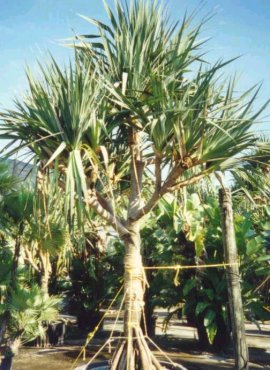 |
|
Também conhecida como VACUÁ
Nativo de Madagascar, Ilhas do Pacífico, Polinésia, Ilha Salomão.
Folhagem compacta, algumas formam espirais como o pandanus utilis.
Existem verdes, brancos e variedades com listras verdes e brancas.
São sensíveis às baixas temperaturas, mas de grande rusticidade, sendo das
poucas plantas que resistem ao vento sudoeste e à maresia.
Fonte: Casa & Jardim - Série Prática - Efecê Editora S/A
|
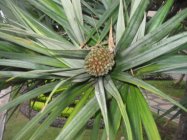
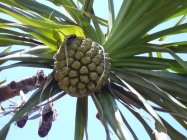
PANDANUS DE HAWAII
PANDANUS DE IPANEMA
|
|
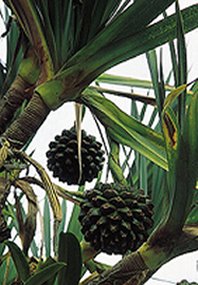
FRUTOS DO PANDANUS
|
|
Descrição:
Pinhão-de-Madagascar
Fruto do Pandanus utilis
Espécie de arbusto
ornamental originária da ilha africana de Madagascar.
Nome científico:
Pandanus utilis Bory
Família:
Pandanaceae
Nome popular:
vacuá / pândano
Origem:
Madagascar
Curiosidades:
Em alguns países as fibras de suas folhas são utilizadas para confecção de tecidos e esteiras.
Apresenta enormes raízes-escora para a sustentação da copa
|
VACUÁ
Nome científico: Pandanus Utilis, P. Candelabrum ou P. Distichus
Família: Pandanáceas.
Divisão:Angiospermae
Plantio: Planta ornamental que se desenvolve através de sementes.
Propriedades medicinais: Os frutos do vacuá facilitam o fluxo menstrual,
aliviando cólicas e outros sintomas desagradáveis.
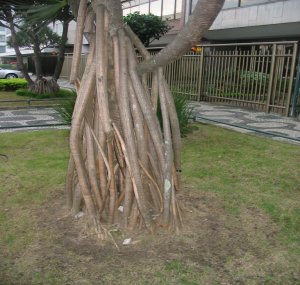 Originária da África, essa planta característica de regiões pantanosas e alagadas, apresenta raízes adventícias,
que recebem essa denominação pois se originam do caule.
Originária da África, essa planta característica de regiões pantanosas e alagadas, apresenta raízes adventícias,
que recebem essa denominação pois se originam do caule.
Essas raízes têm a função de permitir uma melhor fixação da planta sendo chamadas
de raízes-escora.
FONTE: APOSTILHA CURSO ANDRÉ MICALDAS
|
|
PANDANUS
Alguns da numerosa família de Pandanus, como o P. tectorius, cresce selvagem
nas costas do pacifico tropical, e pode ocorrer como pequena árvore ou como espécie
arbustiva, esta usada em jardins.
O nome popular em inglês (parafuso) se origina no crescimento das folhas.
Talvez o mais ornamental dos Pandanus seja o P. sanderi, com listras verdes e amarelas,
existindo uma variedade do mesmo sem espinhos.
O Pandanus alcança entre 6 e 8 metros de altura.
É muito adaptável, preferindo tempo quente e seco.
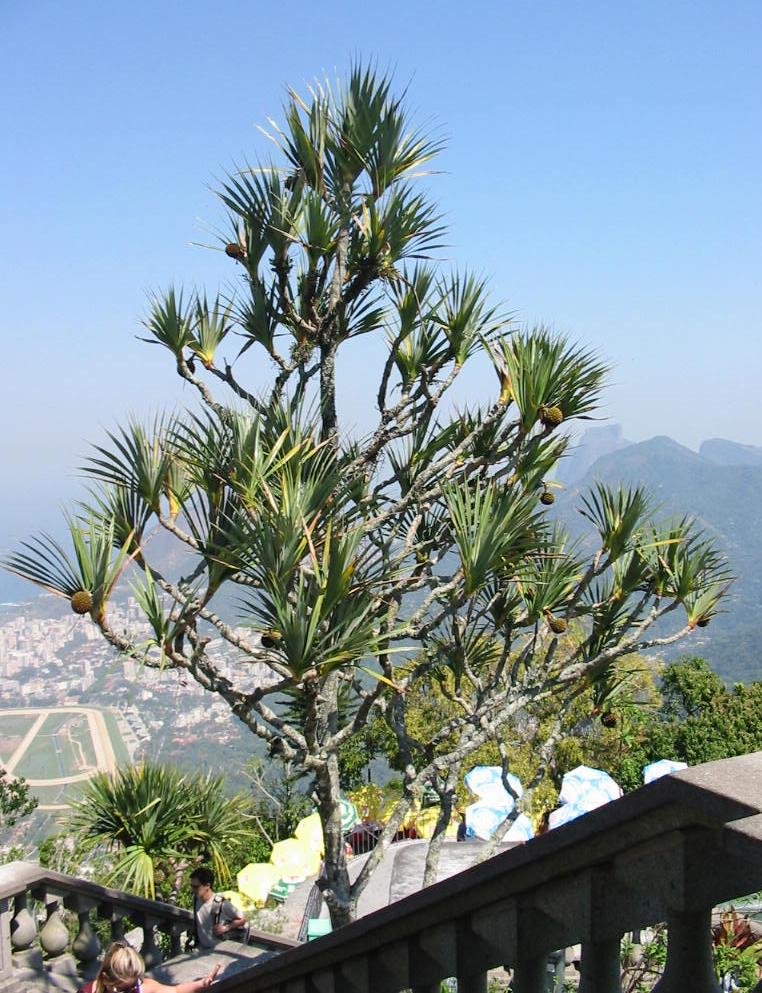 Este encontra-se localizado na base do Cristo Redentor
Este encontra-se localizado na base do Cristo Redentor
Fonte:
Tropical Garden Plants, William Warren, Thames & Hudson, 1997.
Texto original:
Some members of this large genus of over 100 species, like P. tectorius, grow wild along
the seashores of the tropical pacific, and can become small trees, while other,
schrubbier species lend themselves to garden landscapes. The popular name derives
from the fact that the long, prickly leaves emerge in a screw-like arrangement.
Perhaps the most decorative species is the P. sanderi, with green and yellow stripes.
There is a cultivar of P. sanderi whith spineless leaves. Both eventually become quite
large, 6 to 8 meters in height, and so must be carefully sited in a garden.
Pandanus is a very adaptable plant, though it prefers hot, dry conditions.
The easiest method of propagation is by cuttings, which root readily when placed
directly in the soil.
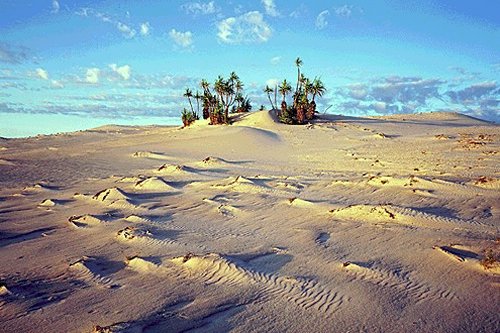 Pandanus spiralis, sometimes called the "screw palm," is the source of fibre used
by aboriginal people in making traditional crafts, including baskets, fish traps,
dilly bags, wall and floor mats, and even shelters. Pandanus occurs throughout the
subtropics, the tropical coastline and savannah.
Pandanus spiralis, sometimes called the "screw palm," is the source of fibre used
by aboriginal people in making traditional crafts, including baskets, fish traps,
dilly bags, wall and floor mats, and even shelters. Pandanus occurs throughout the
subtropics, the tropical coastline and savannah.
Sensoric quality
The leaves's aroma is distinct and hard to describe, somewhat nutty, reminiscent to fresh hay and definitely pleasant. A similar scent is found in some aromatic rice varieties grown in South East Asia (e.g., Thai jasmine rice).
The scent of pandanus leaves develops only on withering; the fresh, intact plants hardly has any odour.
Main constituents
The flavour component of pandanus leaves is not well known. It is speculated that the flavour is due to a volatile product of oxidative degradation of a yellow carotenoid pigment that forms only when the plant whithers. In that respect, there are similarities to saffron and rose, which also contain caroteniod-dervied aroma compounds.
The best candidate is 2-acetyl-1-pyrroline, which was found in pandanus leaves at levels of about 1 ppm (Cereal Chemistry, 70, 381, 1993) and which also occurs in aromatic rice cultivars; another possibility is ethyl formiate, which is also common to rice and pandanus leaves (Naturwissenschaften, 71, 215, 1984).
Yet another study found 3-methyl-2-(5H)-furanone as main volatile compound in pandanus leaves, besides 3-hexanol, 4-methylpentanol, 3-hexanone and 2-hexanone (Flavor and Chemistry of Ethnic Foods, [Proceedings of a Meeting held during the 5th Chemical Congress of North America], Cancun, Nov. 11-15, 1997 (1999)).
The leaves also contain piperidine-type alkaloids (pandamarine, pandamerilactones) with pyrroline-derived structures (Phytochemistry, 34, 1159, 1993)
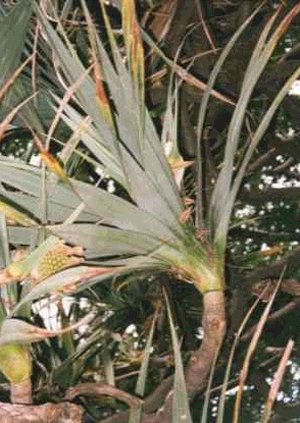 Pandanus utilissimus, a species native to Madagascar, with unripe fruit.
Pandanus utilissimus, a species native to Madagascar, with unripe fruit.
On distillation, the leaves do yiels traces of an essential oil, but it is unclear
to which extent the volatile oil contributes to pandanus' flavour. In Sri Lankan
pandanus leaves (Pandanus latifolius, allegedly synonym to P. amaryllifolius),
the following aroma components have been identified in concentrations less than one
microgramm per kilogramm (ppb) fresh material: styrene 0.62, ?formylthiphene 0.76,
linalool 0.29, ß-caryophyllene 0.55, ß-farnesene 0.18, 1,2-dimethoxybenzene 0.15 and
ß-selinene 1.24 ppb.
(Phytochemistry, 21, 1653-1657, 1982)
Origin
Other than its flower yielding relatives (see pandanus flowers), P. amaryllifolius is not known in the wild state. Today, it is distributed over Southern India, peninsular South East Asia, Indonesia and Western New Guinea.
Male flowers are extremely rare, and there is no scientific description of a female flower for this species. It is also interesting to note that P. amaryllifolius is the only Pandanus species with fragrant leaves. Taken together, these signs, together with the lack of a wild population and the large distribution, imply a long tradition of cultivation. The only examples of flowers come from the Moluccas, and it is plausible that the species evolved there.
Etymology
The genus name derives from the Indonesian name of the tree, pandan.
FONTE http://www.uni-graz.at/~katzer/engl/generic_frame.html?Pand_ama.html
|
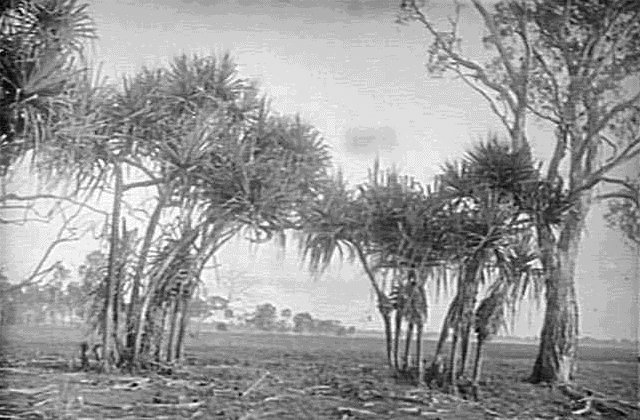
Title: PANDANUS TREES
Location: AUSTRALIA; QUEENSLAND;
|
PANDANUS no RIO DE JANEIRO
# JARDIM BOTÁNICO (depois do Busto de D. João VI)
# HOTEL INTERCONTINENTAL (no estacionamento)
# NO CRISTO REDENTOR
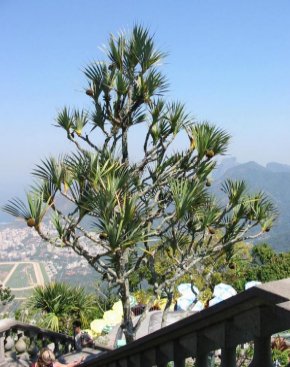
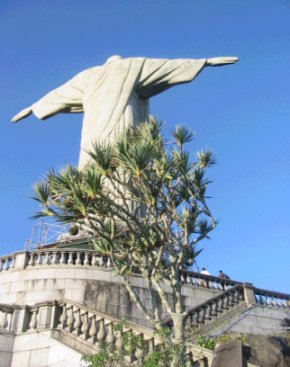
|
|



